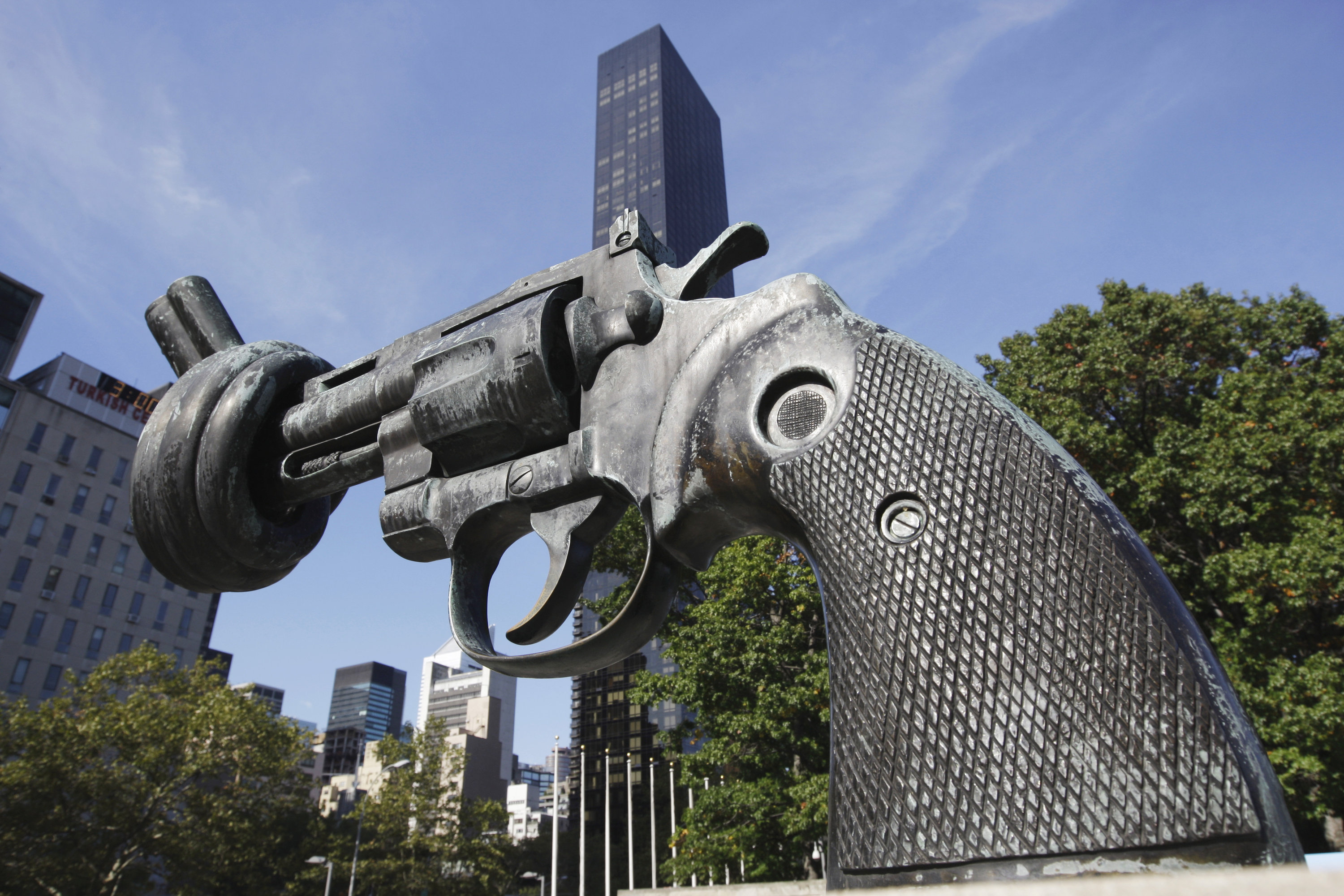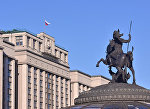MOSCOW, August 30 - RAPSI, Ingrid Burke. The United Nations is currently hosting its second conference in as many months aimed at regulating illicit arms trafficking. July’s conference strived, albeit unsuccessfully, to reach consensus on a binding international treaty that would regulate the global arms trade as a whole. The conference currently underway aims only to review the progress made by UN member nations individually and the international community as a whole in terms of the implementation of an action plan adopted by consensus in 2001 in order to combat the illegal trade of small arms and light weapons.
Both conferences centered on documents- the first a working document that never earned its wings and the second a binding agreement. Both documents are rooted in concern over the illicit arms trade, but one reached consensus and has entered into force on national, regional, and global levels, and one provoked a heated public controversy that endured beyond the deadline for approval by consensus.
To get into the spirit of things, RAPSI has decided to compare and contrast the documents underlying and the controversies surrounding the two initiatives in an effort to better understand what caused the former to sink and the latter to swim.
The UN Conference on the Arms Trade Treaty
Between 2-27 July, representatives of all 193 member nations gathered at the UN headquarters in New York with the common goal of establishing: “a robust and legally binding arms trade treaty that will have a real impact on the lives of those millions of people suffering from the consequences of armed conflict, repression and armed violence,” in the words of UN Secretary General Ban Ki-Moon. Negotiations deteriorated in the last few days of the Arms Trade Treaty (ATT) conference as competing national interests gave way to stubborn resistance.
A draft of the treaty released shortly before the conference deadline was harshly criticized both by right-to-bear-arms activists and by their human rights/disarmament counterparts. The former took issue with what they perceived to be an overly broad range of arms and activities sought to be regulated. The latter took issue with what they perceived to be an insufficiently comprehensive document that left numerous gaping loopholes.
The document included among the list of arms sought to be regulated: battle tanks, armored combat vehicles, large-caliber artillery systems, combat aircraft, attack helicopters, warships, missiles and missile launchers, and small arms and light weapons. This range of weapons has received criticism from both sides of the advocacy spectrum, for being both too broadly and too narrowly tailored.
The inclusion of small arms and light weapons came under fire by advocacy groups that support the right to bear arms. Speaking to this point, International Association for the Protection of Civilian Arms Rights (IAPCAR) Executive Director Philip Watson explained to RAPSI during the conference, “We are appalled they deemed it appropriate to place civilian firearms used for self-defense in a treaty with tanks, bombs, and attack helicopters. It is dangerous to include civilian self-defense weapons in such an international treaty that could curtail legitimate use or trade of small civilian weapons. Personal security and the defense of one's home and family are values shared across international borders, regardless of an individual's background or nationality.”
The opposite side of the spectrum was comprised of disarmament and human rights advocacy groups who argued that the list of arms and activities covered was too narrow. Toward this end, Amnesty International [AI] noted in a press release toward the end of the conference that, “Major loopholes in the draft text include ammunition not being subject to tight decision-making controls, an array of weapons, munitions and related equipment not being covered, as well as the treaty only applying to the international trade of conventional arms instead of all international transfers including gifts and aid.”
A similarly concerned Oxfam released a statement by head of its arms control unit Anna Macdonald around the same time urging that “[t]here are more holes in this draft treaty than in a leaky bucket and these must be urgently closed if we are going to stop weapons from flowing into the world`s worst conflict zones.”
As it became clear toward the end of the conference that hope was lost, some viewed the stalemate as the fault of the US. In a widely publicized move, 51 US senators pledged to vote against ratification of the treaty if it failed to protect the constitutional right of US citizens to bear arms. As US ratification of an international treaty requires the approval of two-thirds of the senate, these numbers were sufficient to ensure against US ratification of the bill.
The pledge came in the form of a letter addressed to the Obama administration. A press release issued shortly thereafter by Republican Senator Thad Cochran of Mississippi quoted a portion of the letter that urged the Obama administration to break the conference’s required consensus if doing so was necessary to protect the right of US citizens to bear arms. The relevant passage stated: “As the treaty process continues, we strongly encourage your administration not only to uphold our country’s constitutional protections of civilian firearms ownership, but to ensure – if necessary, by breaking consensus at the July conference – that the treaty will explicitly recognize the legitimacy of lawful activities associated with firearms, including but not limited to the right of self-defense. As members of the United States Senate, we will oppose the ratification of any Arms Trade Treaty that falls short of this standard.”
Later that day, the US State Department (USDOS) issued a statement acknowledging both the failure of the conference to produce tangible results and the refusal of the US to move to accept the treaty in its ultimate form. USDOS spokesperson Victoria Nuland stated, “we do not support a vote in the UNGA on the current text. The illicit trafficking of conventional arms is an important national security concern for the United States. While we sought to conclude this month’s negotiations with a Treaty, more time is a reasonable request for such a complex and critical issue. The current text reflects considerable positive progress, but it needs further review and refinement.”
Some US-based right-to-bear-arms advocacy groups attributed the stalemate to their own grassroots efforts. The most well-known such group, the National Rifle Association (NRA) took personal credit for the failure of the conference to produce results, stating on its website Friday: “The Conference on the United Nations Arms Trade Treaty has broken down and will not report a draft treaty to the member nations… This is a big victory for American gun owners, and the NRA is being widely credited for killing the [conference.]”
The conference’s launch was drenched with optimism. Prior to the start of negotiations, many lauded the potential of the conference to make the world a safer place through the regulation of the international arms trade. Ban expressed optimism in the face of the daunting task that lay ahead, noting, “It is ambitious, but I believe it is achievable.” During his opening statement, Ban urged the necessity of the conference’s success: “Every day, we at the United Nations see the human toll of an absence of regulations or lax controls on the arms trade. We see it in the suffering of civilian populations trapped by armed conflict or pervasive crime. We see it in the killing and wounding of civilians — including children, the most vulnerable of all. We see it in the massive displacement of people within and across borders. We see it through grave violations of international humanitarian law and human rights law.”
As negotiations fizzled, he lamented, “The Conference's inability to conclude its work on this much-awaited ATT, despite years of effort of Member States and civil society from many countries, is a setback.”
The Second UN Conference to Review Progress Made in the Implementation of the Programme of Action to Prevent, Combat and Eradicate the Illicit Trade in Small Arms and Light Weapons in All Its Aspects
The conference currently underway has been scheduled to run from 27 August to 7 September. A list of member nations in attendance has not yet been released, but a UN official speaking to RAPSI Thursday confirmed that at least 75-80% of UN states are represented.
The document at issue is the politically binding “Programme of action to prevent, combat and eradicate the illicit trade in small arms and light weapons in all its aspects,” (POA) which was adopted by consensus in 2001.
From the start, the UN has made clear its intention to refrain during the course of the conference from restricting firearm ownership rights. A UN press statement explained, “The Review Conference only reviews progress made in the implementation of the Programme of Action which was adopted in 2001 to combat the illicit trafficking of small arms and light weapons… It is not about banning firearms or any other type of small arms or prohibiting people from owning legal weapons.”
The release emphasized the conference’s disinterest in imposing lofty regulations, stating: “Each sovereign State determines its own laws and regulations for the manufacture, sale and possession of firearms by its citizens. The United Nations has no jurisdiction over such matters.”
After denying rumors that the conference would essentially serve as a component part of a broader UN conspiracy—in connection with the Arms Trade Treaty—to prohibit civilian gun ownership, the release reiterated the recent failure of the ATT to come into existence: “The Arms Trade Treaty does not yet exist. It was discussed throughout July 2012 and focused on setting common standards for how States could regulate the international trade of all types of conventional arms. No consensus was achieved on a draft Treaty text. “
This conspiracy theory denial points to a critical difference between the conferences and the documents at their core. The ATT sought to regulate the international trade of all types of conventional arms. The POA sought to eliminate the illicit trade of small arms. The goals of the former were extraordinarily lofty; those of the latter, quite narrow.
The POA was born the successful outcome of a conference similar to that which failed to produce the ATT. UN members came together with the goal of combatting, preventing, and eradicating the small arms trade in July 2001, and reached a consensus on how to do so: by targeted, limited means.
Regardless of where one stands on the right to bear arms, it is worth noting the different reactions elicited from the two texts with similar goals but diametrically opposed scopes.
It should be noted that the POA has been criticized by its own implementation support system for lacking key mechanisms to ensure its implementation. It is possible that the inclusion of such mechanisms would have created obstacles to its approval similar to those faced by the ATT.



